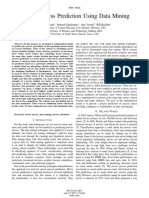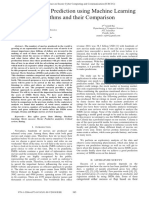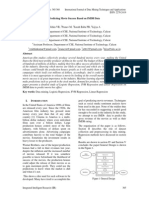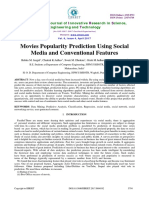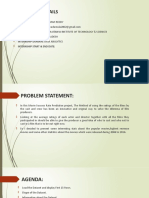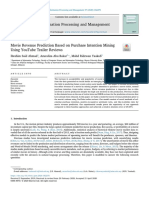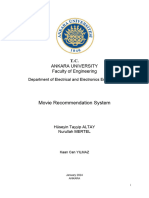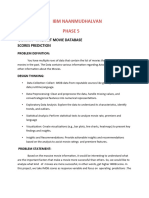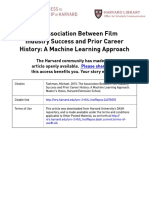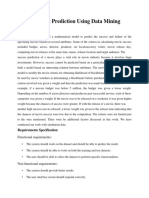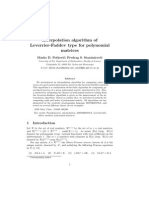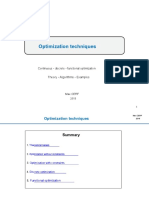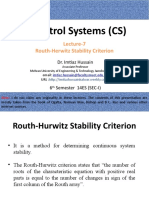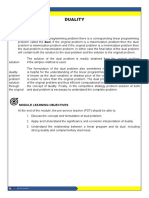0% found this document useful (0 votes)
33 views9 pagesMovie Success Prediction Using Data Mining
The study presents a model for predicting movie success using data mining and machine learning techniques, focusing on factors such as historical data of actors, budget, and marketing. By analyzing past movie data, the model aims to assist producers and directors in making informed decisions to increase profitability and reduce financial risks. The proposed model demonstrates a potential accuracy of 97-98% in predicting the success of upcoming films.
Uploaded by
Ayokunle OmotundeCopyright
© © All Rights Reserved
We take content rights seriously. If you suspect this is your content, claim it here.
Available Formats
Download as PDF, TXT or read online on Scribd
0% found this document useful (0 votes)
33 views9 pagesMovie Success Prediction Using Data Mining
The study presents a model for predicting movie success using data mining and machine learning techniques, focusing on factors such as historical data of actors, budget, and marketing. By analyzing past movie data, the model aims to assist producers and directors in making informed decisions to increase profitability and reduce financial risks. The proposed model demonstrates a potential accuracy of 97-98% in predicting the success of upcoming films.
Uploaded by
Ayokunle OmotundeCopyright
© © All Rights Reserved
We take content rights seriously. If you suspect this is your content, claim it here.
Available Formats
Download as PDF, TXT or read online on Scribd
/ 9


